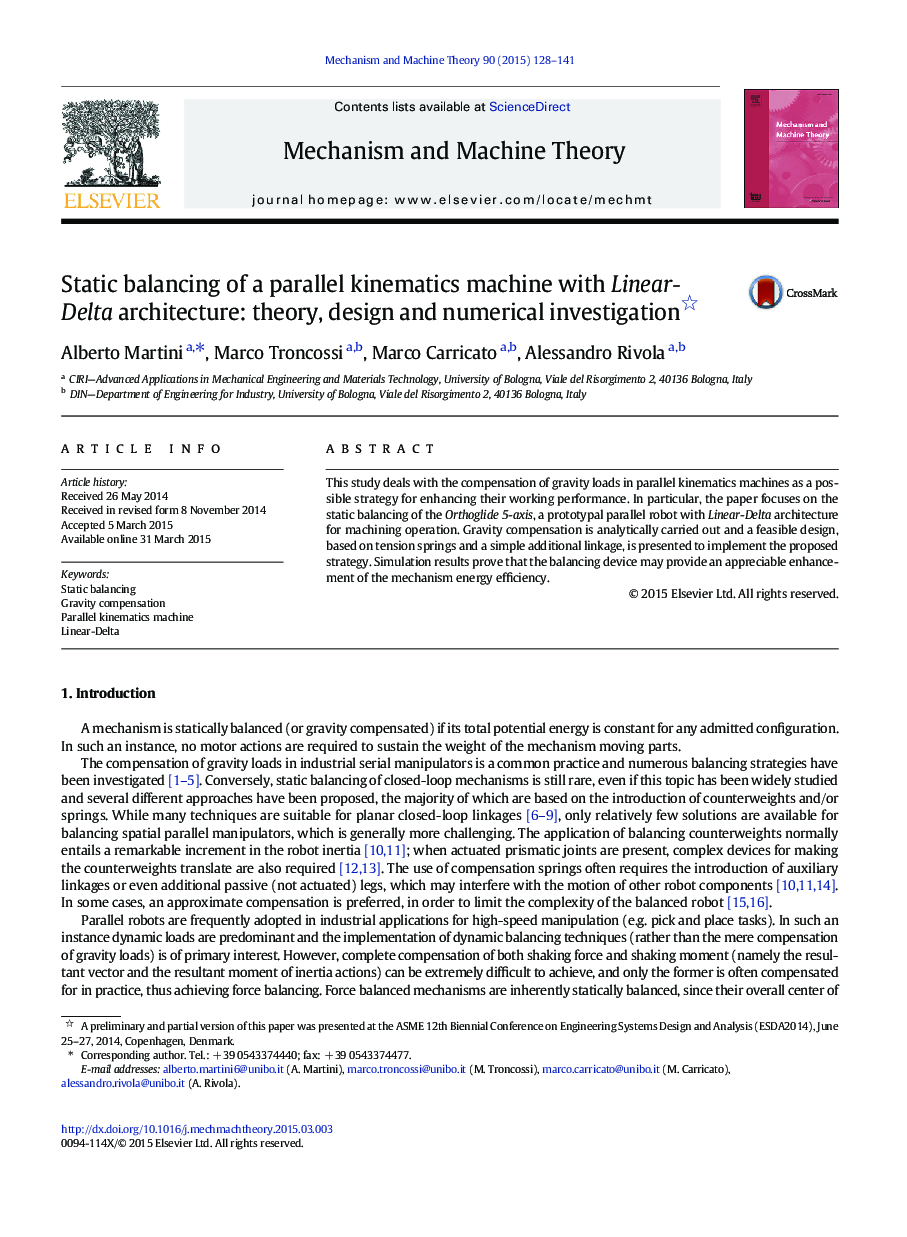| Article ID | Journal | Published Year | Pages | File Type |
|---|---|---|---|---|
| 802138 | Mechanism and Machine Theory | 2015 | 14 Pages |
•Gravity compensation of a 3-DOF spatial parallel mechanism is analytically performed.•A feasible solution with two balancing springs and one auxiliary linkage is presented.•Static balancing reduces the robot estimated energy requirements for common tasks.•The compensation effectiveness is marginally affected by potential design inaccuracies.
This study deals with the compensation of gravity loads in parallel kinematics machines as a possible strategy for enhancing their working performance. In particular, the paper focuses on the static balancing of the Orthoglide 5-axis, a prototypal parallel robot with Linear-Delta architecture for machining operation. Gravity compensation is analytically carried out and a feasible design, based on tension springs and a simple additional linkage, is presented to implement the proposed strategy. Simulation results prove that the balancing device may provide an appreciable enhancement of the mechanism energy efficiency.
